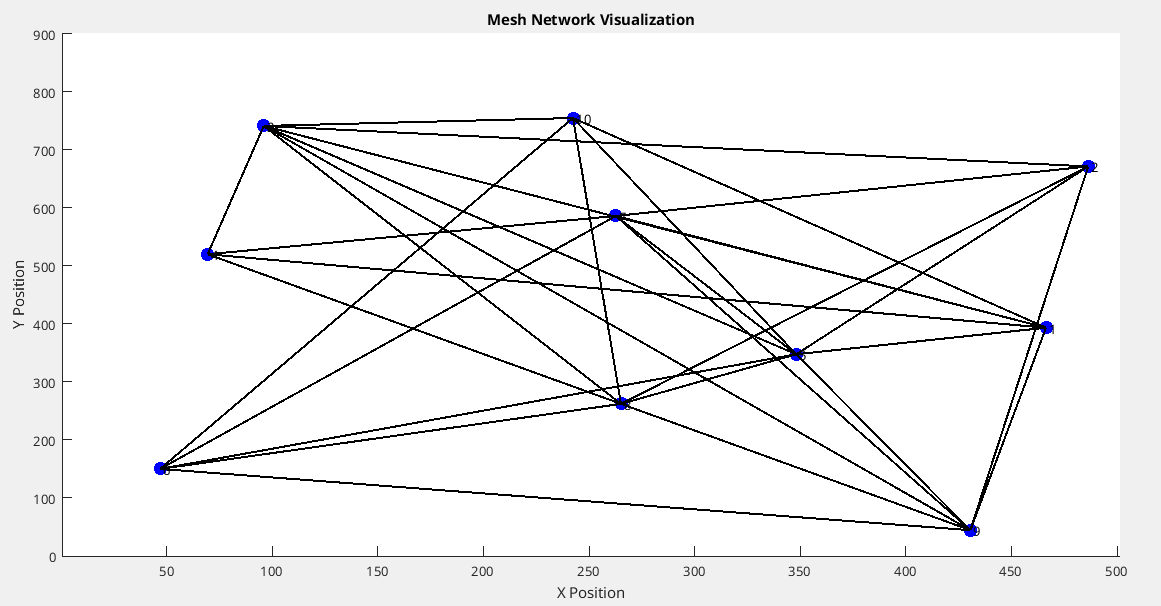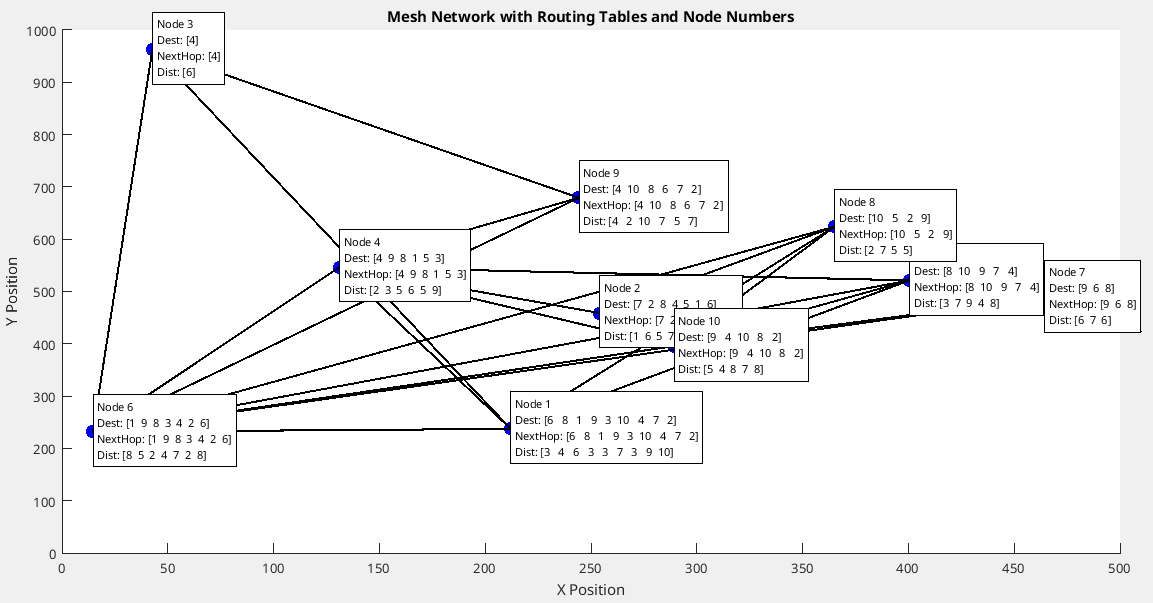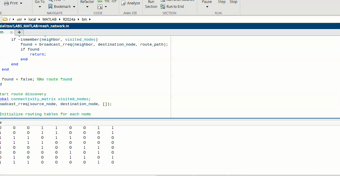Simulating a Mesh Network with RREQ Route Discovery Protocol
Mesh networks play a vital role in environments where traditional network infrastructure is unavailable or difficult to implement. One such example is underground mines where reliable communication is essential.
To better understand how these networks operate, I simulated a multi-node mesh network using MATLAB, where I implemented a basic RREQ (Route Request) discovery protocol.

The simulation allows customization of the network size and the number of nodes. Nodes are randomly generated within a specified area, and connections between nodes are made at random with the following constraints:
- No duplicate connections allowed.
- Every node must have at least one connection.
The connections between the nodes are stored in a matrix, where each entry indicates whether a specific pair of nodes is connected.

The RREQ discovery protocol is implemented as a recursive function. When a node wants to send a message to a destination, it calls this function on all its neighbors (nodes connected to it). Each neighbor then calls this function on its own neighbors. This process continues until the destination is found or all paths are explored.
What’s great about the RREQ protocol is its adaptability to network changes, and it operates with minimal computational overhead, making it suitable for dynamic environments.
The video below is the RREQ protocol in operation.

In the future, I plan to compare the RREQ protocol with other proactive and reactive routing protocols to assess its performance in various scenarios.
To stay updated on this research and article, subscribe to my newsletter!
